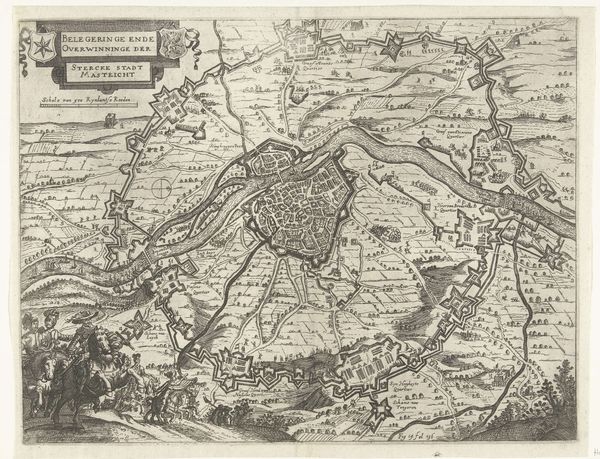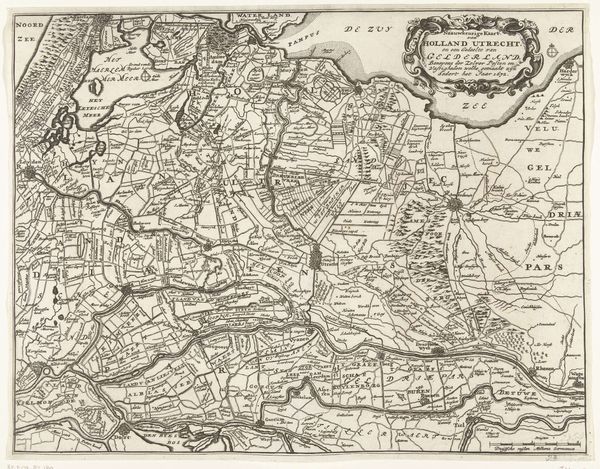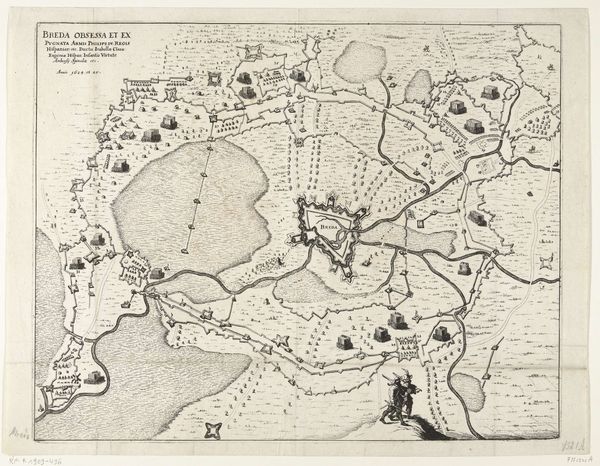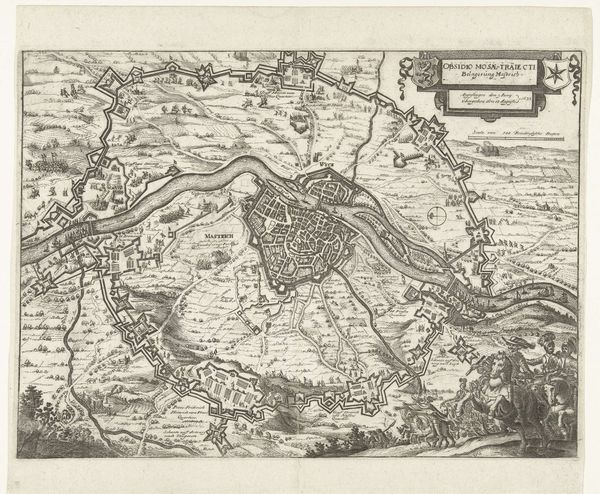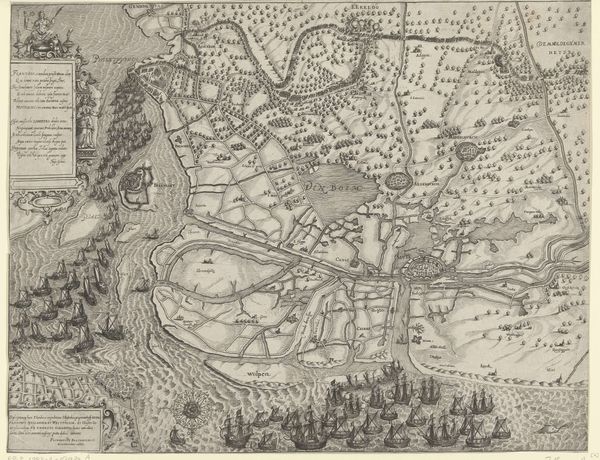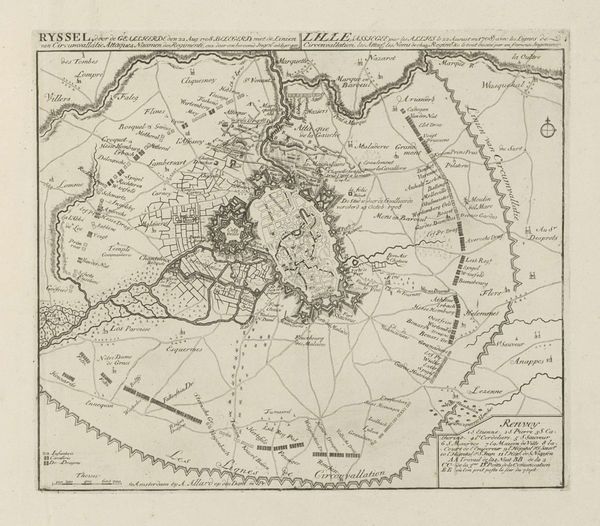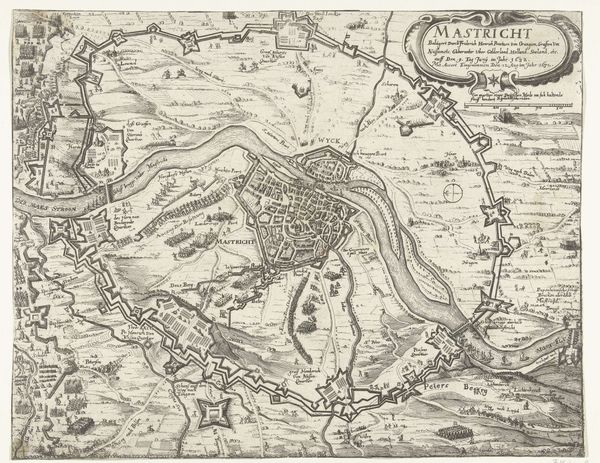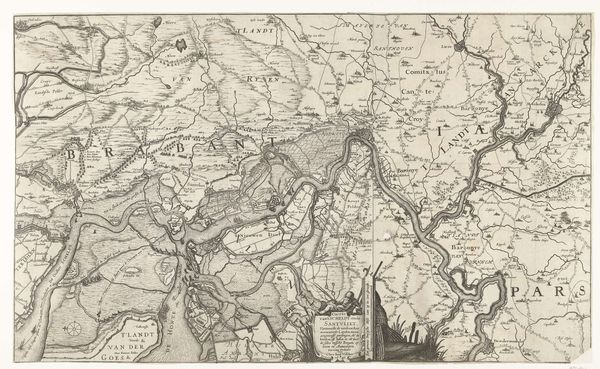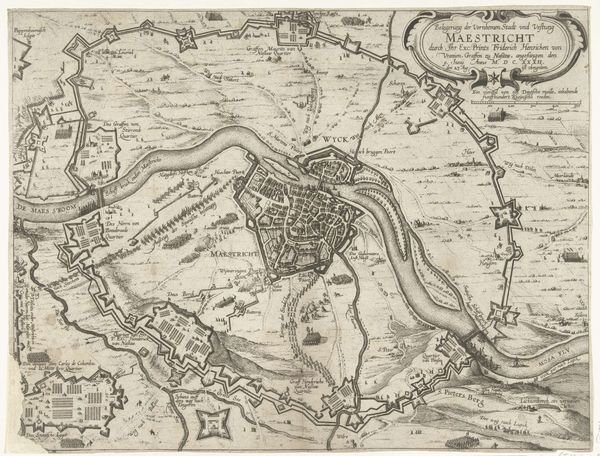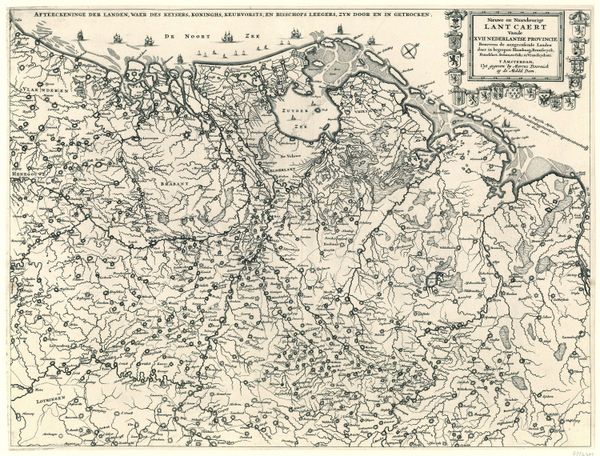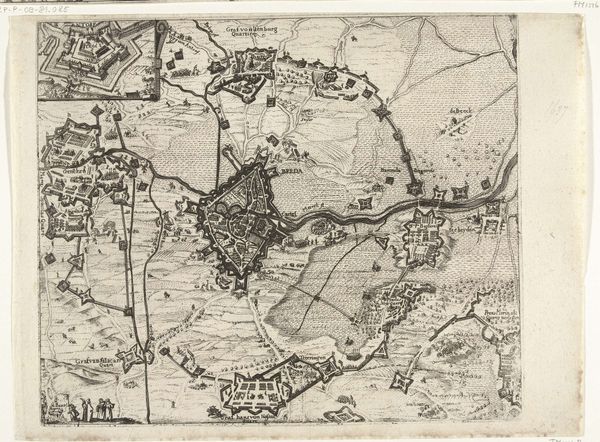
print, engraving
# print
#
old engraving style
#
landscape
#
cityscape
#
history-painting
#
engraving
Dimensions: height 227 mm, width 323 mm
Copyright: Rijks Museum: Open Domain
Curator: Let’s discuss this intriguing engraving, "Siege of Breda," dating roughly from 1637 to 1674, currently held at the Rijksmuseum. What's your initial take? Editor: My first thought is of careful labor. The dense, almost overwhelming level of detail in this print is striking; every tiny line speaks to a massive commitment of time and the skillful hand of the engraver. It demands patience from the viewer too. Curator: Absolutely. Consider Breda’s strategic importance during the Eighty Years' War. This image serves not just as a depiction of a military action, but as propaganda, reinforcing Dutch power and military engineering prowess. It represents a moment in the Netherlands’ fight for independence. Editor: Propaganda indeed. The neat, almost geometric organization of the siege lines suggests an overwhelming degree of control, which perhaps obfuscates the messiness and brutality inherent in siege warfare. Note also the materiality—the precision demanded by the copperplate engraving lends the image a distinct aura of authority. Curator: Precisely! Engravings like this circulated widely, informing and shaping public perception of historical events. It represents the conflict as organized, almost predetermined, reflecting the aspirations of the Dutch leadership. Editor: I'm intrigued by the tension between the distant aerial perspective and the tiny figures at the print's bottom. It creates a bizarre sense of scale, and raises questions. Did those on the ground truly understand the strategic decisions occurring around them? How did this top-down representation of their suffering impact their understanding of the conflict? What inks did they have? Curator: A compelling point about the power dynamics embedded in the visual representation itself. It definitely elevates the leadership and distances the common soldier from the narrative of the war. Editor: It's fascinating how the print becomes both a historical record and a material object deeply enmeshed with the sociopolitical forces of the time. It's a reminder that even seemingly objective documents can be shaped by those who commissioned their production. Curator: Looking at this today gives a new view on what winning the information war means. Editor: For me, it highlights how deeply intertwined material production and sociopolitical narratives are—and continue to be!
Comments
No comments
Be the first to comment and join the conversation on the ultimate creative platform.
